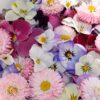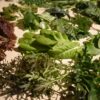Raspberry (Rubus idaeus)
Raspberry Sorbet
- 175g granulated sugar
- 250ml water
- juice of ½ lemon
- 450g raspberries
- Place the sugar in a pan with the water. Heat gently until the sugar has dissolved, then boil for 1 minute until the mixture is slightly syrupy. Pour into a bowl, add the lemon juice then cool.
- Press the raspberries through a sieve, then pour the sugar syrup over the pips in the sieve to extract as much juice as possible.
- Pour the mixture into a shallow container and put in the freezer. After 2 hours take out and break up the ice crystals with a fork, then return to the freezer for another 2 hours.
Continue to break up the ice every hour until the mixture is firm. - Move the container to the fridge 30 minutes before serving.
For a seasonal twist, serve with basil syrup.
http://realfood.tesco.com/recipes/raspberry-sorbet.html
Dioscorides claimed raspberries originated near Mount Ida in Crete, and from there the raspberry gets its Latin name Rubus idaeus. Wild raspberries have been eaten since prehistoric times.
Description
Closely related to the bramble or blackberry (Rubus fruticosus), raspberry is a deciduous shrub with biennial bristly stems (some cultivars lack thorns completely) growing from perennial rootstock. The leaves are divided into 3 – 7 ovate leaflets with white woolly undersides. Clusters of small, white flowers appear in the second year through spring and summer, developing into the soft red juicy and fragrant red berries by late summer into autumn.
Many varieties and cultivars exist.
Flowers are hermaphrodite and the plant is self-fertile, relying on pollination by bees and flies.
| Size: |  |
1.5m |  |
2m |
| Position: | 
Full sun |

Part Sun |
Well-drained soil |
|
| Uses: |
|
|
Ideal growing conditions
Prefers a moist and light soil, well drained and slightly acidic. While they grow well enough in partial shade, they require ample sun and water to produce bountiful fruit. Staking may be required and old stems should be removed after fruiting, while the whole plant can be pruned lightly in spring to encourage fruiting. They are quite susceptible to root rot, and are often planted in mounds to overcome this problem.
The plant spreads quite readily through suckers, and need to be kept in check in the small garden.
Companion planting
Do not grow in the same soil as potatoes, tomatoes, aubergines, strawberries, peppers or bulbs have previously grown as these host Verticillium wilt, a fungus that can infest the raspberry crop. Planting raspberries close to potatoes may make them more susceptible to blight. Raspberries should also not be grown with blackberries, boysenberries or loganberries. Yarrow, garlic, tansy, wormwood and lavender are good companions for raspberries.
Propagation
Seed: sown in spring (species, R. idaeus) only
Stem Cuttings: softwood cuttings in summer; leaf-bud cuttings in late summer; hardwood cuttings in winter
Root Cuttings: roots and suckers in winter during dormancy
Layering: tip layering in summer
Whole Plant Division: spring or autumn
Harvesting
Leaves: before flowering and dried for infusions
Roots: in summer and dried for decoctions
Berries: in late summer and autumn as they ripen; used fresh and frozen
Uses
Culinary: The fruits are eaten fresh, or made into preserves such as jams, jellies, and syrups or served as compotes, coulis and sorbets. A favourite flavouring for vinegar. Raspberry leaf is made into tea.
Medicinal: The leaves are often given to pregnant women in the last three months as a preparation for childbirth. The leaves can be used as a gargle or wash for mouth inflammation, ulcers, bleeding gums, and tonsillitis while the gentle astringent action makes it a good remedy for diarrhea. The root bark is astringent and used in decoctions for sore eyes. The berries are rich in vitamin C and manganese (100g berries delivering over 32% of the daily adult required intake).
Economic: Raspberry flavour is important in the food industry and is also used in medicines, shampoos and bath products.
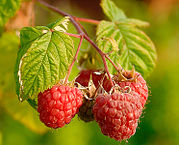
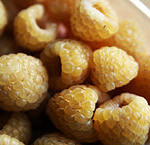
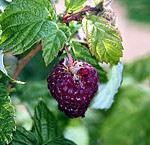
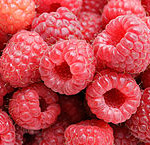

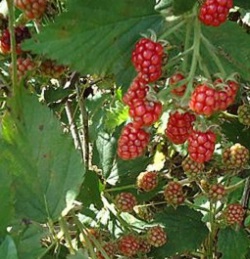
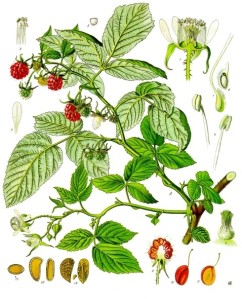
 Edible Fruit
Edible Fruit
